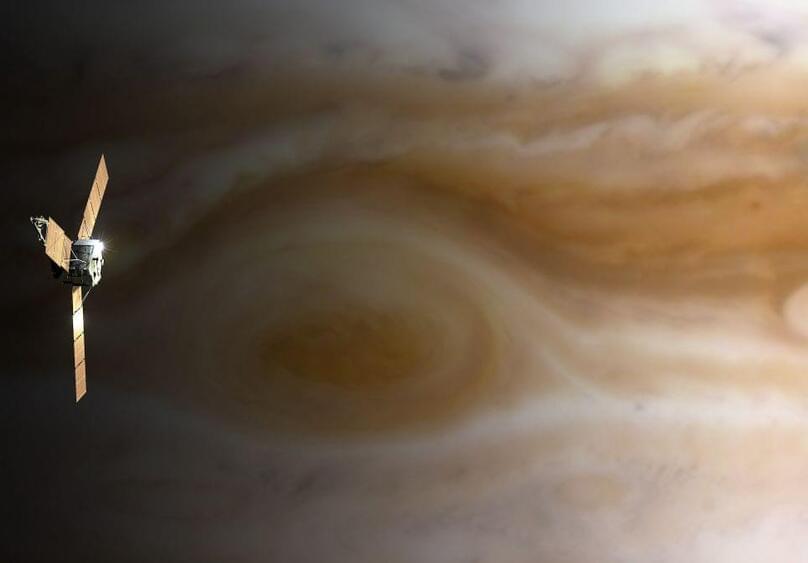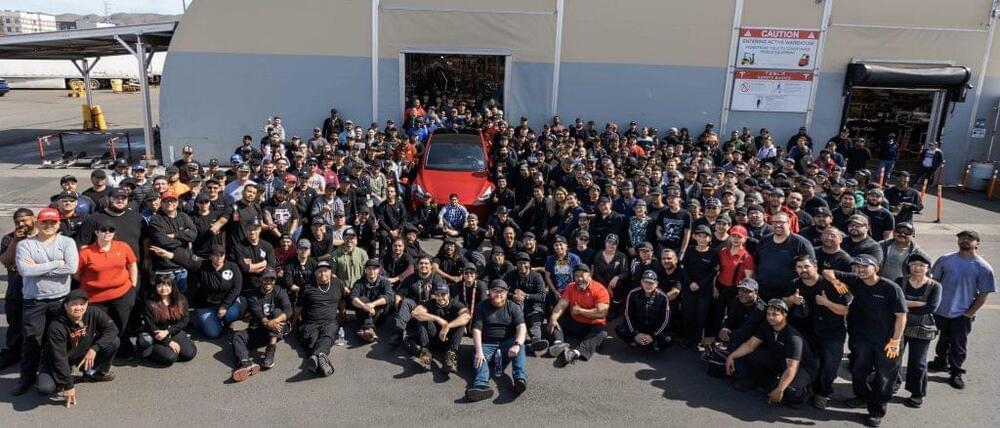You can also just see the first stage flip round on its way to A Shortfall of Gravitas. Credit: NASA.



Dawn Aerospace has successfully completed five test flights of its uncrewed Mk-II Aurora suborbital spaceplane in the skies over Glentanner Aerodrome on New Zealand’s South Island. The flights were conducted by the New Zealand-Dutch space transportation company from July 28 to 30 2021 at altitudes of up to 3,400 feet (1,036 m), with the prototype airframe fitted with surrogate jet engines.
The three-days of test flights to assess the airframe and avionics of the aircraft took place under a certificate issued to Dawn by the New Zealand Civil Aviation Authority (CAA), which allowed the Mk-II Aurora to operate from conventional airports without airspace restrictions after ground tests were completed.
The Mk-II Aurora is designed to take off and land horizontally using conventional runways. It’s currently equipped with surrogate jet engines, but these will be replaced by a liquid-fuel rocket engine, which is now undergoing static tests. Once installed, the hydrogen peroxide/kerosene engine will propel the spaceplane to supersonic speeds and high altitudes, and ultimately to a height of 100 km (62 mi) on a suborbital trajectory.


The launch next month of the first all-civilian mission to orbit is an ambitious test for a burgeoning space industry’s futuristic dream of sending many more ordinary people to space in the next few years.
Why it matters: Companies and nations envision millions of people living and working in space without having to become professional, government-backed astronauts. Those hopes are riding on SpaceX’s next crewed mission, called Inspiration4.
SpaceX CEO Elon Musk has plans for a giant orbital arm that he claimed resembles a character from Godzilla.

Elon Musk recently shared a rather interesting update on Twitter — his companies now employ about 110,000 people worldwide. This is quite impressive considering that in the grand scheme of things, Tesla, SpaceX, and Musk’s other ventures are still just getting started.
Musk’s update came as a response to a TSLA bull on Twitter who inquired if his companies had already reached the 100,000-employee milestone. Musk’s response revealed that his companies had not only met their 100,000 employee mark — they had already passed it.
Elon Musk did not share further details about his companies’ worldwide employee headcount, though there is a good chance that the lion’s share of his workers today are in the United States and China. These are the two countries where Tesla, one of Musk’s largest companies, has operational vehicle production plants, after all.

According to SpaceX CEO Elon Musk, the space company will attempt something very different to recover its massive Super Heavy booster after it launches.
“SpaceX will try to catch largest ever flying object with robot chopsticks,” Musk tweeted early Monday morning.
He was referring, of course, to the giant robotic tower SpaceX is building to catch the primary rocket stage after it gives the company’s Starship spacecraft a boost into orbit.
SpaceX has come a long way in the three years since Starhopper’s debut. Here’s the progress being made on the Starship and Dragon spacecraft today.
At ~5:02 pm CDT on August 27 2019, SpaceX successfully launched its Starhopper test vehicle on a 150-meter flight test. After ascending to 150-meters, Starhopper successfully landed at a landing pad ~160-meters away.
The 150-meter flight was the last of a long line of tests that Starhopper, the first vehicle in the Starship program, conducted. It was based on the Big Falcon Rocket (BFR, a previous name for Starship)2018design. Starhopper used a single Raptor engine and three non-retractable legs.
After several static fires, a one-meter tethered hop, and several scrubs, Starhopper conducted a 20-meter hop on July 25 2019. This was Starhopper’s first major flight and the first time a Raptor was used in flight.